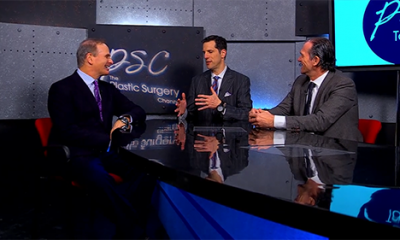
Breast reduction surgery has the highest patient satisfaction rate of all plastic surgery procedures. What are the different types of reductions, and under what circumstances will insurance will cover the surgery? Those questions and more answered in the latest episode of Plastic Surgery Talk.

In the latest episode of Plastic Surgery Talk, host Dr. William P. Adams, Jr. talks with board certified plastic surgeon Dr. Joe Gryskiewicz about the different surgical options available for women with overly large breasts. The most common surgical approaches include lipo reduction, minimal scar reduction, and full reduction.
[media id=549 width=640 height=480]
Liposuction reduction: Less than one percent of breast reductions are done this way, which uses conventional liposuction techniques. The procedure is often called the “scarless breast reduction,” but it does involve small incisions. In liposuction breast reduction, fluid is injected into the breast that separates tissue from fat, and then liposuction is performed. It takes less time than other methods because it is done under IV sedation, but leaves the breast deflated instead of lifted.
Minimal scar reduction: This is also called the LeJour method, vertical mammoplasty or the lollipop method. In this surgery, the surgeon cuts around the areola and then down the front of the breast to remove excess tissue. This is also a rarer method due to the fact that patients must be size DDD or smaller for the incision to be large enough for tissue removal. Often, insurance will not cover those patients.
Full breast reduction: This method is also called anchor breast reduction or keyhole breast reduction, in reference to the shape of the incision. It’s also the most common procedure used. In some cases, the nipple has to be removed and grafted back on to preserve the blood supply.
Recovery and Scarring
Recovery after breast reduction surgery is usually one to two weeks. “A lot of patients actually say that the breast doesn’t hurt at all, but the area we did liposuction on hurt them a lot,” says Dr. Joe Gryskiewicz. “I tend to do liposuction on all my patients because they have a little roll coming off the side of the breast, and then that allows you to keep the incision much shorter.”

Scars all tend to fade from a lumpy red mark to a thin white line in a few months; scars will be more noticeable in darker skin types. However, for most patients the cosmetic outcome is not as important as the physical outcome of the surgery. “In most patients, the scarring is secondary because these patients are suffering.”
One of the biggest keys to a successful surgery is picking the right surgeon, says Dr. Gryskiewicz. “You want to make sure they are board-certified through the American Board of Plastic Surgery and make sure they’ve had appropriate training.” This includes making sure that a doctor’s medical residency matches their current specialty, he notes.














Facebook
Twitter
Instagram
YouTube
RSS